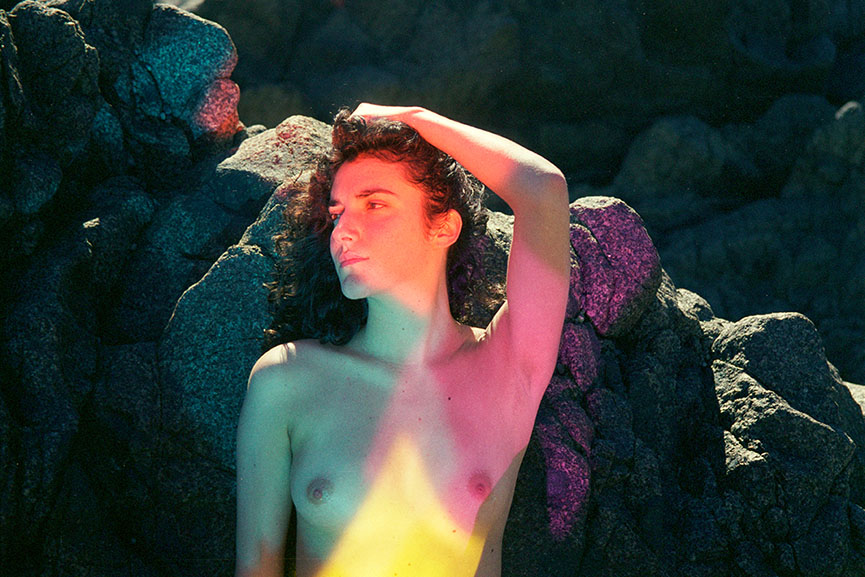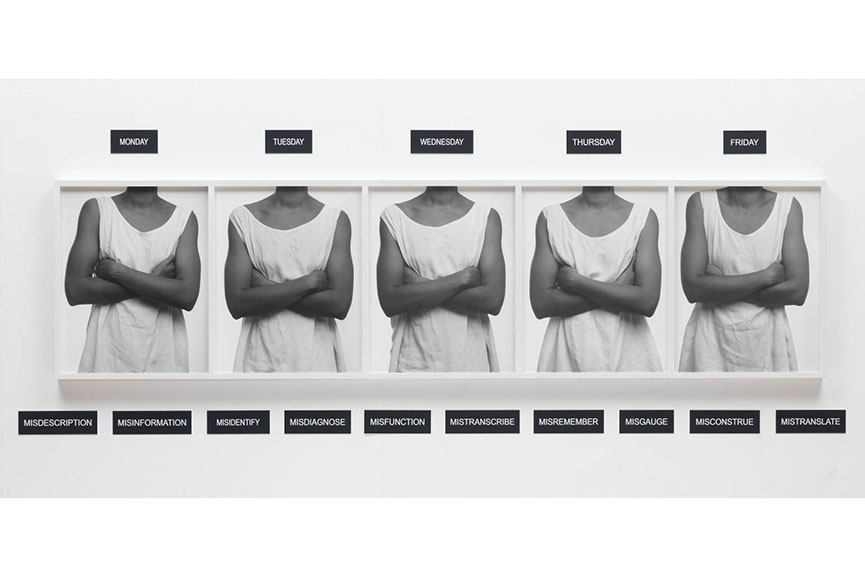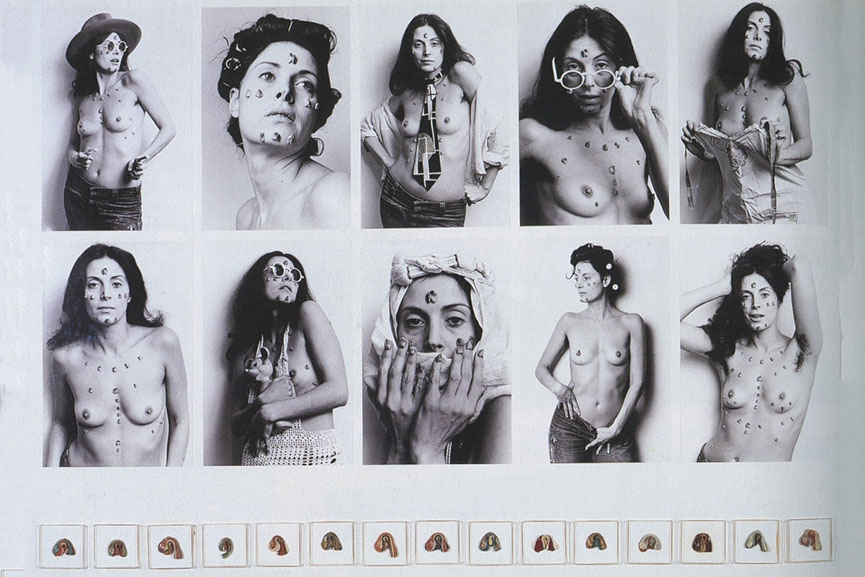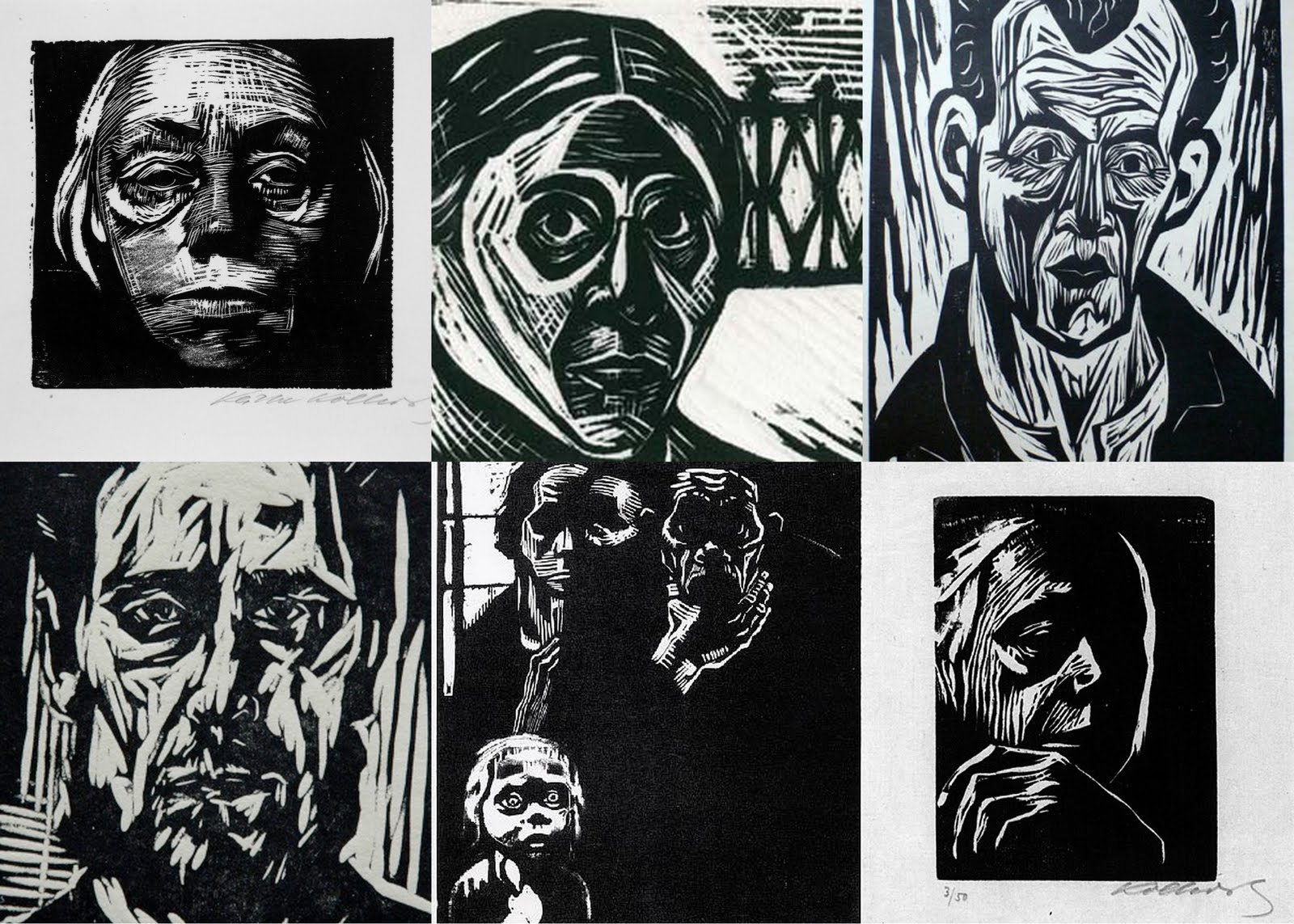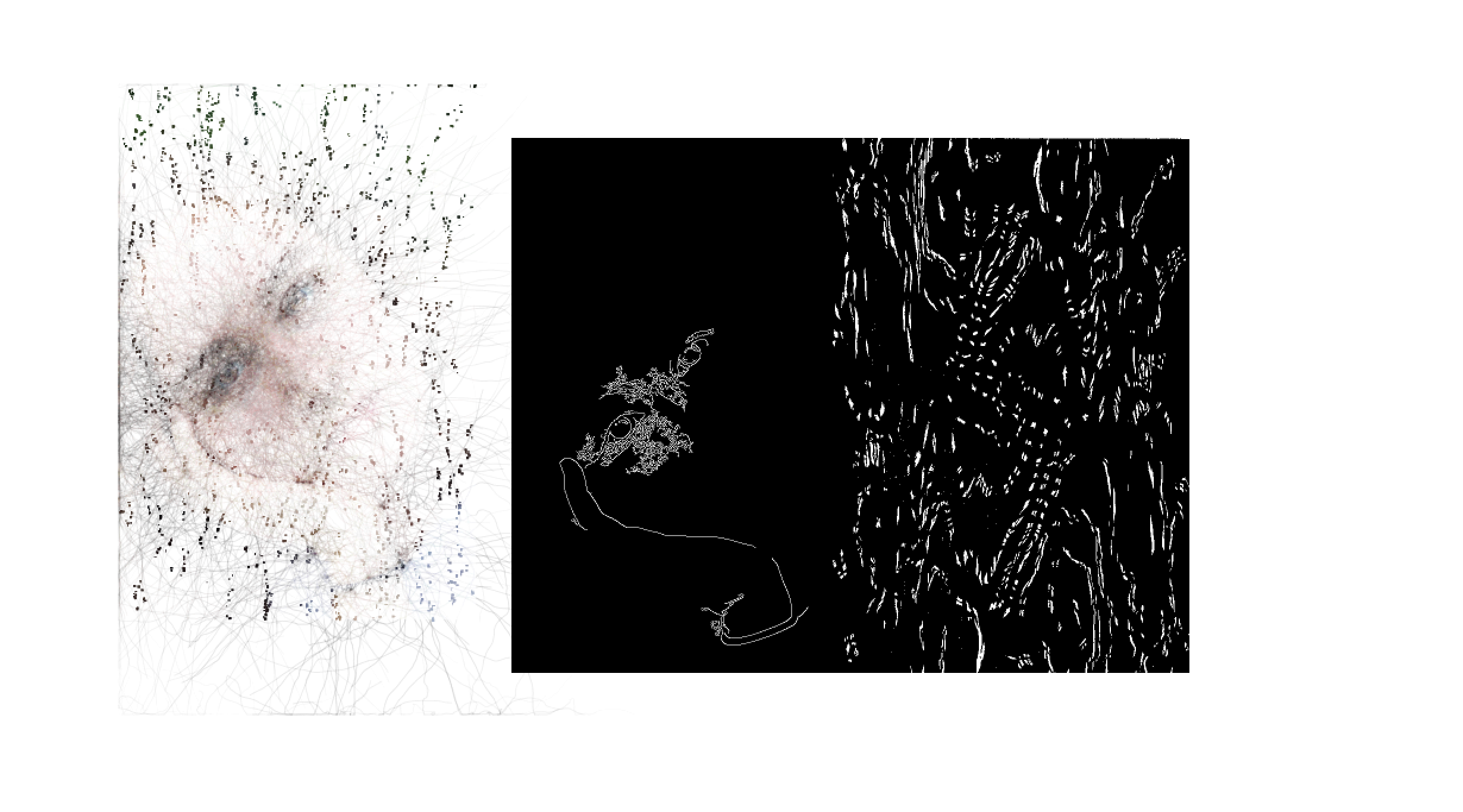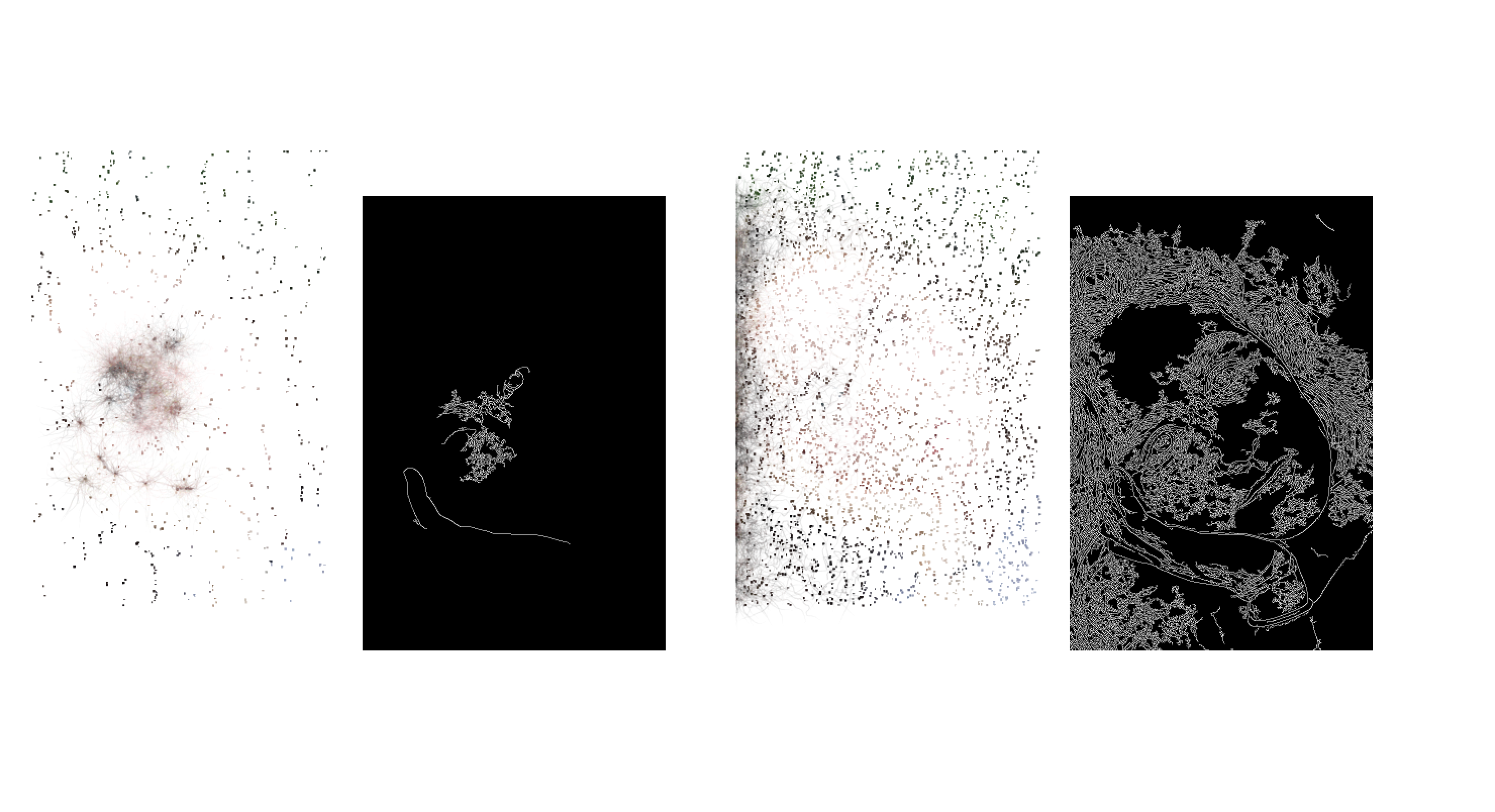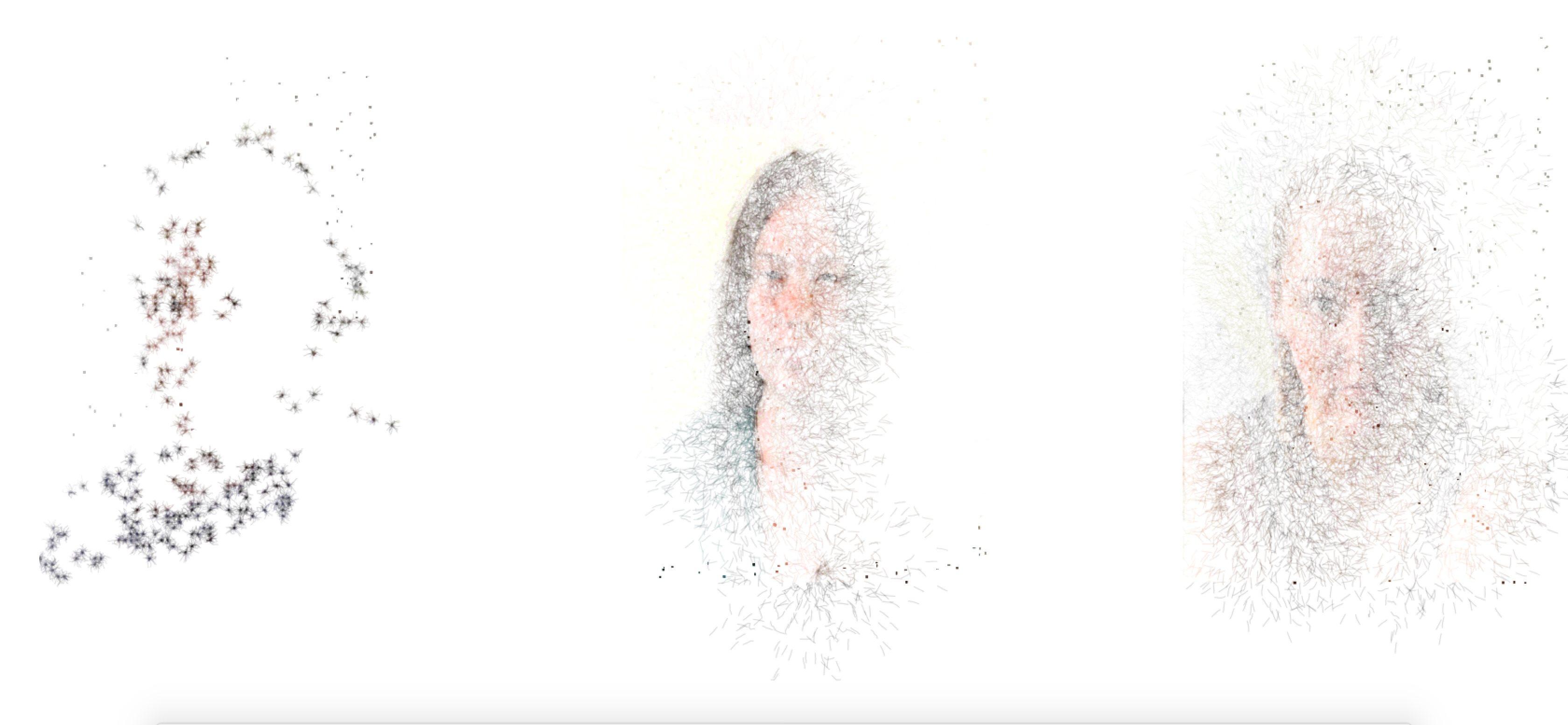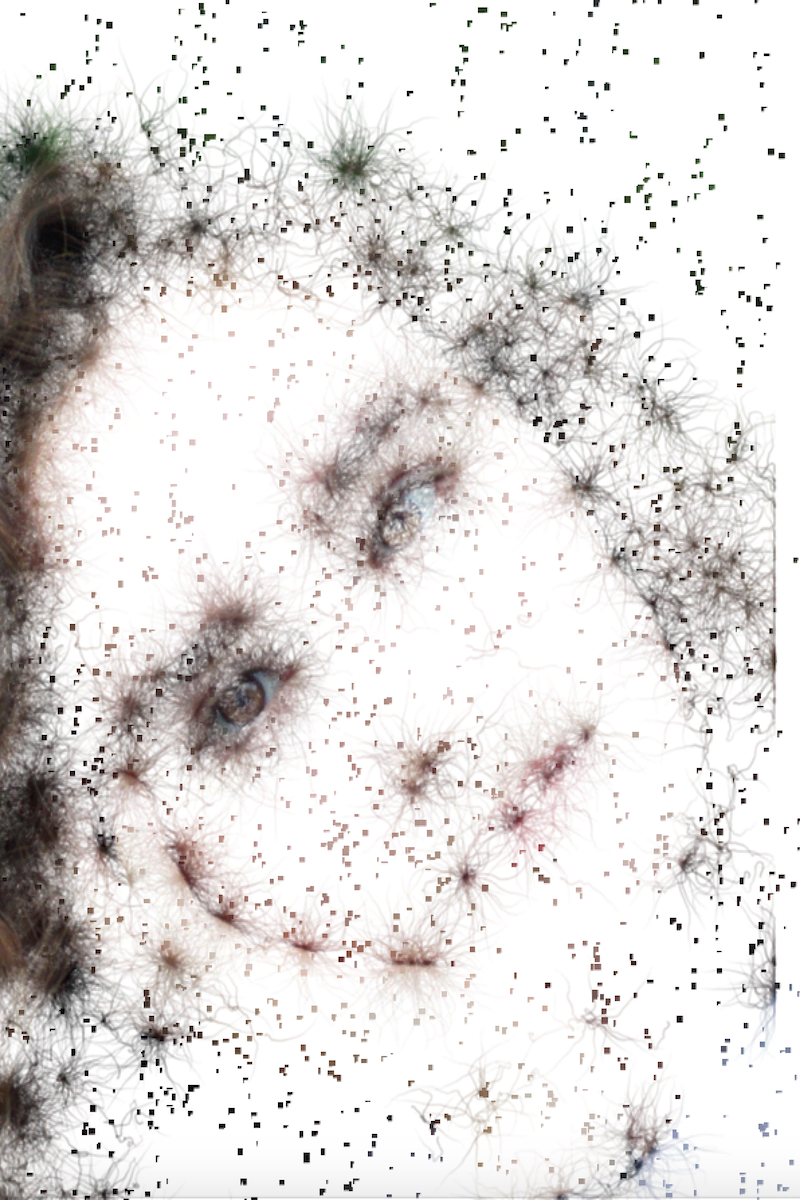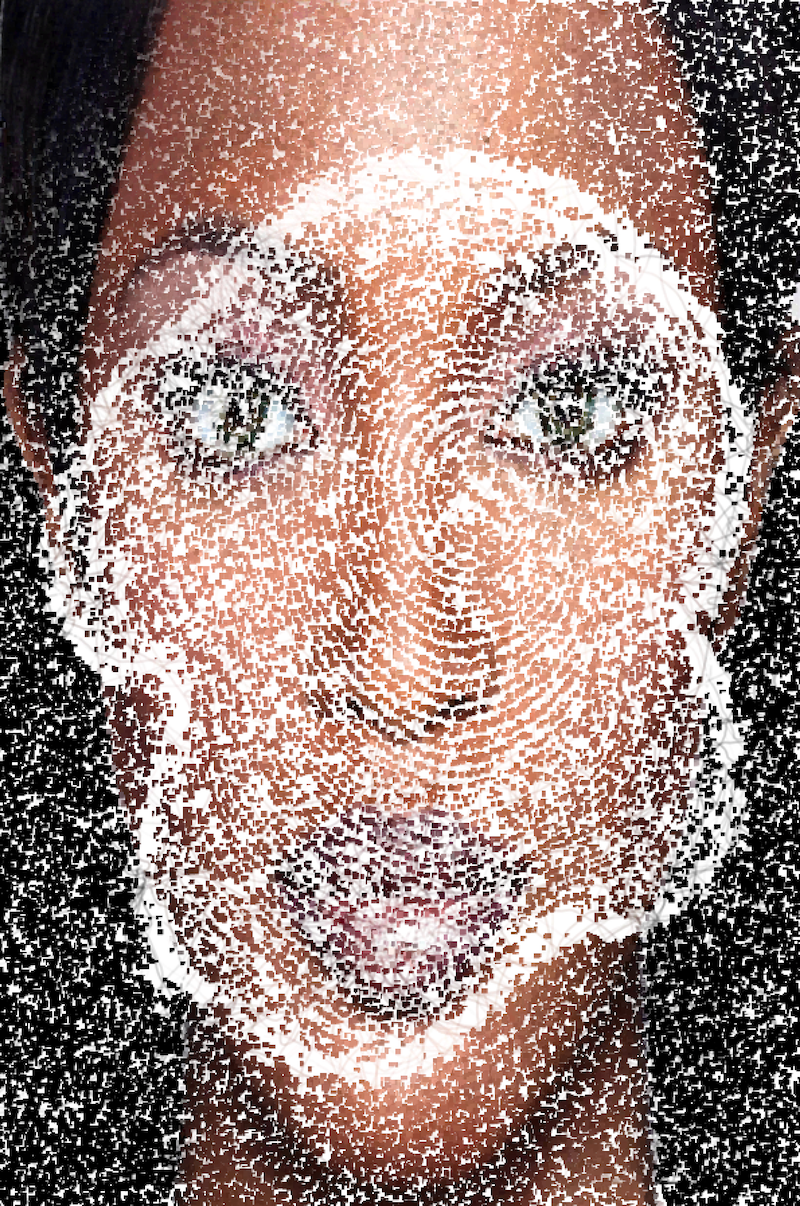FUNDAMENTAL FORTITUDE
A series of portraits that seek to reframe what a feminist portrait could be. Utilising both hand-made and computational processes; the portraits are a marriage of physical and digital. Through the use of a genetic algorithm, photographs and woodcut prints were merged to create a new portrait.
produced by: OLIVIA MOLITOR
-introduction-
This work is an exploration of a portrait or what it could be. Focusing on three subjects all chosen because they exude fortitude i.e. courage. They seek to better the lives of the people around them, whether they be refugees, or primary and secondary school children. This work is in celebration of their strength and consciousness. In that same framing, the importance of woodcuts comes into play; the act of carving and preserving the immutably human aspect of the work. There are heavy feminist theory and idealism influences. There is a slight twist though - the photographs were taken by a male photographer and the woodcuts are a feminist interpretation. Through the use of a kinect, projector and a printing press, the viewer is presented with an unconscious choice; whatever they decide effects the eventuality of the new portrait being projected.
-concept and background research-
Upon finding Segmentation and Symptom (2000: Golan Levin) I was struck by the tender and delicate strength in the work. Levin created a series of portraits for the British arts quarterly Zoo. He created a custom ‘filter’ that utilised the voronoi algorithm. He applied the algorithm to repurposed photographs of refugees. I was particularly drawn to the fragility of the composition and how the resulting image looked like spider webs. I wanted to bring a level of that to my project.
Some things that informed the way I conducted my project was based on Laura Mulvey’s seminal work surrounding the ‘Male Gaze’. Whilst Mulvey’s work is based in film, there were aspects that I was able to take on. She speaks to the way that women have been predominantly portrayed in film as an object rather than a whole and well-rounded person. With that, I wanted to shift and reclaim part of the experience.
At the centre of my work is women. At the centre of what I am truly interested in is somehow communicating an experience of someone who identifies as a woman. Fundamentally, this filters into almost every aspect of the work I seek to make. I wanted to create a project that spoke to some of that whilst still being heavily grounded in computation. I also knew that I wanted to integrate printmaking. With all of the digital components of this degree, I felt that I needed a return to the physical; a return to the tangible.
I knew that I wanted to use a printmaking process and woodcuts felt like a natural progression of my initial idea. At first, I wanted to create a program that created a new portrait and then I would print that output. I spoke to a couple of people about it and they pointed out that the computational processes were quite minimal and although it sounded interesting, they felt like I could push it out more. I looked for printmakers who are using a digital aspect and it was very hard to find someone who was making use of programming.
I set out to investigate feminist artists that have created a portrait of a kind. I found an incredible breadth of difference and beauty. I was particularly struck by the artist Marcelina Amelia. She often plays with the mixture of religious iconography as well as dreams and creates really arresting images. The one that I liked quite a lot was ‘Pussy Grabs Back’ I liked the unapologetic manner in which the subject is portrayed. I again, wanted to bring an aspect of that to my project and subsequent work.
Once I settled on having a dichotomy of feminist and masculine - I asked the photographer not to give them too many directions in terms of how they would pose or what facial expression. It was important to me that the photographs to be real. I wanted the people in them to look at the photos after and see themselves; I wanted them to be honest.
-technical-
I chose to use Processing because I have found it to be easier to navigate. As well as much more suited to my needs. I found Daniel Shiffman’s videos and a couple of them acted as an eventual basis. Using Shiffman’s blob detection algorithm which works through a kinect I was able to enact the vision. The kinect detects depth values of an object/person in space, so it was a perfect choice to measure where the viewer(s) were stood.
Seeing as the piece was divided up into two parts, woodcuts and photographs, I wanted to have an accurate counter of where people were in the room and which side they were drawn to. If a person is within range then a blob appears. If a second person enters and is stood next to that first person, then the blob grows. If the second person is stood on the opposite side of the room, then a new blob appears.
No people, no blobs.
Using examples from the osc library I was able to build on and send a simple communication via osc that for every blob, the kinect continuously counts the total amount of blobs both on the right and left.
For every single blob there is an osc message sent. It has with it the various parameters such as:
- total counter for the left and right
- a counter for each blob on the left and right
- how many minutes has the program been running
- number of blobs
- whether or not the kinect is on and working
The data that is collected is fed into the program that creates new portraits. When the photograph and the woodcut are loaded into the program a filter is applied to the woodcut. It is enhanced by a variable called carveThreshold; which gives the woodcut more or less detail and makes it black and white. The photograph is processed by the Canny edge detector algorithm, which reduces the photo to a very detailed line drawing. I used colour images because it was easier to make out what was going on than when everything was grayscale. Essentially, it overlays them and where there is a white pixel in the photo a particle emerges in the new portrait. The particle looks like a sprawling and growing line which moves around randomly.
The program creates three new portraits when it is launched and each image has its own timer value. Using a for loop that looks at the timer, it checks if an image needs replacing. It also takes into consideration the current time/clock; it can either be less than or greater than the timer for the images. If its less than, it would be a continuous drawing of the three images. If it is greater than then it resets the image timer and deletes the previous image to make way for a new one. Where ‘genetics’ come into play are a really important variable called geneticRatio. It is the quotient of the total blobs from the right and total from the left. This variable informs the blob manufacturing. If there are blobs then the genetic ratio plots new points. If there are no blobs then it randomly sets new parameters for the image. Of course with genetics there has to be a chance of mutation. The possibility of mutation is at 9% throughout.
-future development-
There are so many ways that I could expand this project. One comment that I received was that the interaction and the resulting ‘new’ portrait didn’t happen quickly enough. I do take that on board but with a caveat. With the ever advancing march of technology things have only sped up. Our interactions with technology are centred around immediacy. On a lot of levels that is completely fine, if not necessary, but on the other hand I would argue that it doesn’t all have to be so. The instant gratification that is so sorely desired and sought out is pervasive. I am not sure if it is how much technology has sped up or if as a collective, our attention span and our patience has shrunk.
Either way, if I were to develop this project further I would speed up the program a little bit. With the way all of the components fit together, it would make sense to have the generation of the new portraits happen quicker. I think it would potentially extend the interaction with the viewer as well. The process of collecting the data from the kinect which then informs the particle system’s behaviour could result in more drastic images. The shift from photographic to abstract is quite gradual as it is now.
Another way that I would like to expand it is to include more women. I think it would be really interesting to have a wide range of women and be able to showcase their strength, resilience and ultimately courage.
-self evaluation-
Assessing this project is an interesting task mostly because it has been such an interesting experience. I wanted to create something that meant more to me; and I did. There have been so many rewarding parts of this project starting with interviewing the women. I was pushed out of my comfort zone a couple of times and I am grateful for it. At the outset, I had no idea how to accomplish what was in my head. There are some flaws with the final product but overall, I am quite happy with the result.
A friend was kind enough to lend me their projector, but it just wasn’t as strong as I needed. The pixelation that was visible hindered the development of the new portraits a bit. At a couple of points, I saw people trying to get closer to the projection to make out more of the growing aspect and they were clearly left wanting. As I mentioned above, I think the interaction wasn’t as immediate and there are ways that I could remedy that in the future. I thought it was an intriguing mixture having my piece and another of my coursemate’s piece in the same space. Their piece was provocative and centred around the intense prevalence of violence in our society and employed a wii gun. I don’t feel that it negatively impacted my piece but I do feel like it made the contrast of our pieces very apparent.
I was so happy to cultivate a project that encompassed printmaking in some respect. This project felt more balanced to me in terms of computation and process artwork. It was my attempt at marrying the two and hopefully creating something better for it.
-references-
- http://mem-inc.jp/artists_e/sawada_e/
- http://www.bbc.co.uk/programmes/articles/1jf1fRhFjvtL2Vbrqqj16V8/the-female-gaze-annie-leibovitzs-women
- http://www.flong.com/projects/zoo/
- https://www.youtube.com/watch?v=9zfeTw-uFCw&list=PLRqwX-V7Uu6bJM3VgzjNV5YxVxUwzALHV
- https://www.youtube.com/watch?v=ce-2l2wRqO8&list=PLRqwX-V7Uu6bw0bVn4M63p8TMJf3OhGy8&index=7
- https://www.youtube.com/watch?v=1scFcY-xMrI&list=PLRqwX-V7Uu6bw0bVn4M63p8TMJf3OhGy8&index=8
- http://www.traceyeminstudio.com/exhibitions/2016/05/punk-its-traces-in-contemporary-art-2/
- https://en.wikipedia.org/wiki/Blob_detection
- http://www.creativeapplications.net/inspiration/donato-sansones-portrait-final/
- https://en.wikipedia.org/wiki/Canny_edge_detector
- http://www.vam.ac.uk/content/articles/p/prints-21st-century/































































